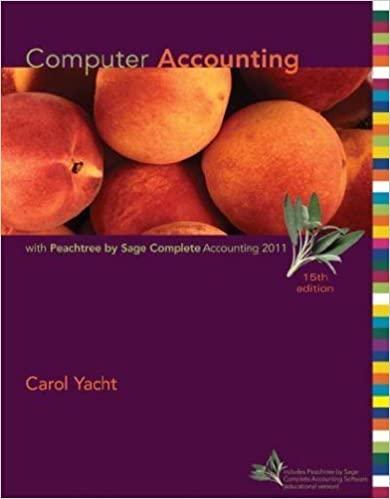Questions 20 and 21 please! I attached the balance sheet

20. Assume the bad debt expense accrued for the fiscal year ended on January 31, 2011 was $70 million. What was the amount of accounts receivable that were written off during this fiscal year? a. 116 b. 318 c. 272 d. 70 21. What are the effects of bad debt write-off in Question 20 on Wal-Mart's balance sheet? a. Assets and equity decrease b. Assets and equity increase c. Assets and liabilities decrease d. No effects a. 22. What is Wal-Mart's total cash flow for fiscal year 2010? -512 b. 512 -774 d. 250 C. WALMART STORES, INC. Consolidated Balance Sheets AN ASSETS Current assets: Cash and cash equivalents $ 7.395 $7.907 5.089 4,144 Receivables, et 36,318 32.713 3,138 2.960 Inventories Prepaid expenses and other Current assets of discontinued operations 131 140 51.893 48032 Total current assets 24.386 22.591 79.051 73.657 38.290 34.035 2.595 2.355 Property and equipment Land Buildings and improvements Fixtures and equipent Transportation equipment Construction in process Property and quipment Less accumulated depreciation 4.262 5.210 1384 137.848 (18 100 41,486) 105.098 99.544 Property and equipment, not 5.905 5.669 3.125 (2.905) 2.780 2.763 Property under capital ases: Property under capital mes less accumulated amontiration Property under capital leases, bet Goodwie Other assets and deferred charges Total assets 16.763 16.126 4,129 3.942 S180663 $170,407 LIABILITIES AND EQUITY Current liilities: Short-term borrowings $ 1.0315 323 . The consolidated financial statements have been prepared in conformity with accounting principles generally accepted in the United States. Those principles require management to make estimates and assumptions that affect the reported amounts of assets and abilities Management's cstimates and assumptions also affect the disclosure of contingent assets and liabilities at the date of the financial statements and the reported amounts of revenues and expenses during the reporting period. Actual results may differ from those estimates Cash and Cash Equivalents The Company considers investments with a maturity of three months or fess when purchased to be cash equivalents. All credit card, debit card and EBT transactions that process in less than seven days we classifieds cash and cash equivalents. The amounts due from banks for these transactions classified as cash caled 1.2 billion and $2.6 billionat January 31, 2011 and 2010, respectively. In addition, cash and cash equivalents includes restricted cash related to cash collateral holdings from various counterparties as required by certain derivative and trust agreements of $504 million and 5469 millionat January 31, 2011 and 2010, respectively, Receives Receivables consist primarily of amounts due from insurance companies resulting from our pharmacy sales banks for customer credit card, debit card and electronic bank transfers that take in excess of seven days to process suppliers for marketing or incentive programs consumer financing programs in certain international subsidiaries and real estate transactions We establish a reserve for uncollectible receivables based on historical trends in collection of past due amounts and write-off history Our overall rosene for uncollectible receivables was $252 million and $298 million at January 31, 2011 and 2010, respectively (252) (a baddest 70 Inventories allance The Company values inventories at the lower of cost of market as determined primarily by the retail method of accounting, using the last-in, first-out ("LIFO) method for substantially all of the Walmart U.S. segment's merchandise inventories. The retail method of accounting results in inventory being valued at the lower of cost or market since permanent markdowns are currently taken as a reduction of the retail value of inventory. The Sam's Club segment's merchandise is valued based on the weighted average cost using the LIFO method Inventories for the Walmart International operations are primarily valued by the retail method of accounting and are stated using the first in first-out (FIFO) method. At January 31, 2011 and 2010, our inventories valued at LIFO approximate those inventories as if they were valued at FIFO. As discussed in Note 2. cffective May 1, 2010, the Company changed the level at which it applies the retail method for valuing inventory for its operations in the United States Canada and Puerto Rico. The retrospective application of this accounting change impacted both sepment and consolidated operating income, as well as consolidated net income for all comparable periods presented. Revenue Recognitione The Company recognizes sales revenue net of sales taxes and estimated sales returns at the time it sells merchandise to the customer. Customer purchases of shopping cards are not recognized as revenue until the card is redeemed and the customer purchases merchandise by using the shopping card. The Company also recognizes revenue from service transactions at the time the service is performed. Generally, revenue from services is classified as a component of net sales on our Consolidated Statements of income










